I’ve taken my last morning beach walk of the week. Today’s tally? Three baby horseshoe crab shells, two gaping fish heads, one spiny sea urchin, scads of tinkling cockle shells. I searched in vain for the tell-tale tire tracks of a newly hatched nest of sea turtles. The nests must have remained undisturbed overnight, cordoned off like a crime scene with orange plastic tape. I’m off to haul suitcases to the car and point our compass toward home.
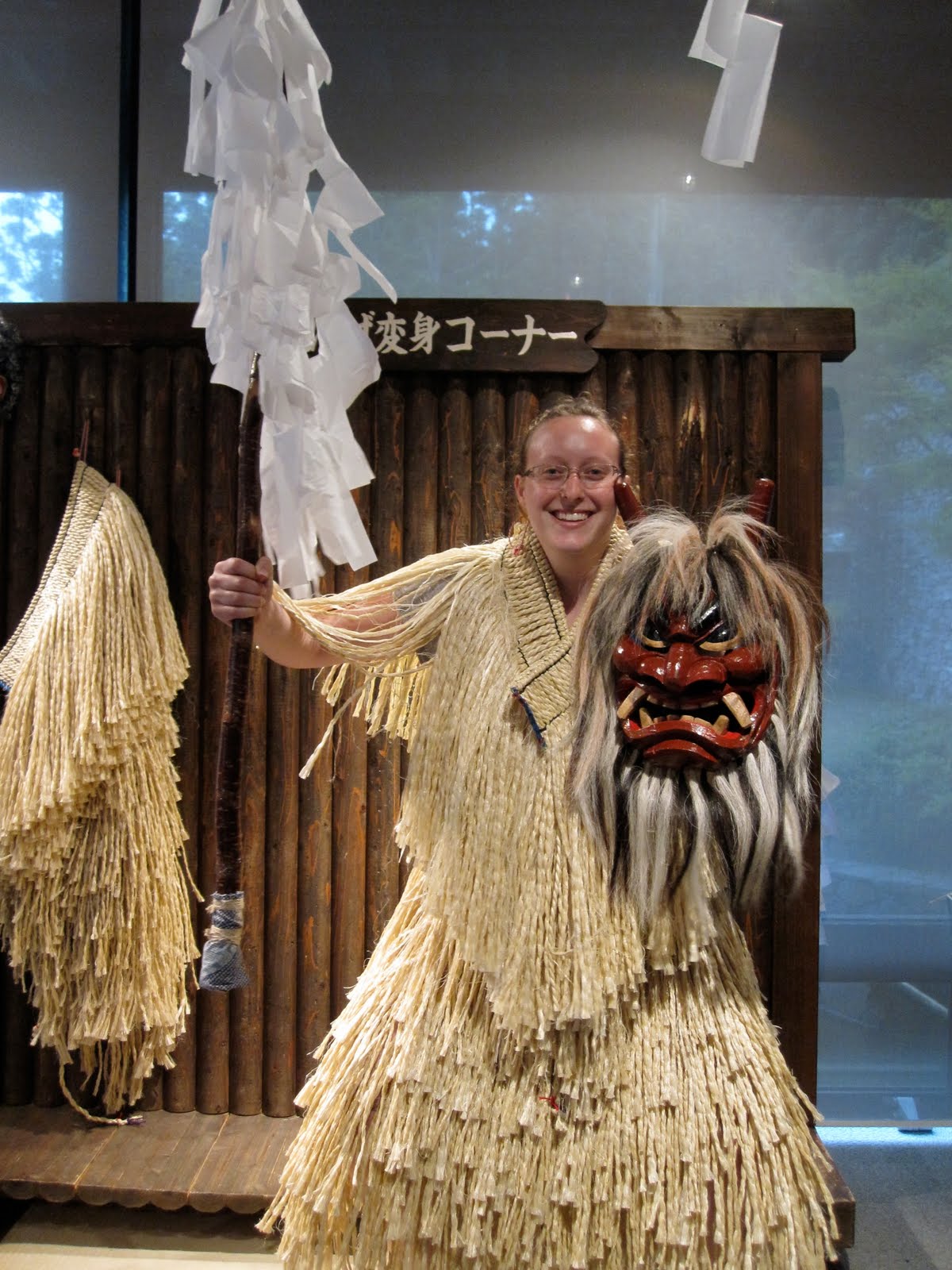
This week’s final guest blogger is a good friend who I’ve known since she was a mewling infant. Grown now into a lovely, vivacious young woman, Melissa Taylor-Malloff brings to us her experiences of expatriate life in Japan. Accomplished now in handling chopsticks, translating American soda flavors for befuddled grocery store customers, and clearing seven feet of snow (in one night) from a parking lot, Melissa has no shortage of stories to tell nor no end to her reserves of cheer, determination, and humor. She shares her stories weekly at The Adventures of Eric and Melissa.
I will allow Melissa to tell you more about herself, because I fear if I edited her bio I wouldn’t be able to do her voice justice. Without further ado, here she is:
About Melissa
As midterms hit the Fall semester of my Senior year, I sat studying for finals with a very new sparkly diamond ring on my left hand and suddenly realized that the real-world I had spoken of a fact of life of the future for so long was just around the corner.
We pondered about what to do after graduation with degrees that required Masters programs before we were really qualified for relevant employment and a crashing economy and the options that were few and far between were less than exciting, until we decided to apply for jobs abroad. All we really knew was that we wanted to experience something totally new and different to both of us, but having grown up in NYC and the desert of Arizona we had a bit of a challenge.
With 48 hours left ticking on a count-down to the application deadline we stumbled across the JET (Japanese Exchange Teaching) programme. We called professors and references at a very late hour on a weekend and begged and pleaded for letters of recommendation, we stayed up all night completing a very complex application, and come Monday morning we waited for Fed-Ex to open so we could Same-Day air mail applications for our spur of the moment dream jobs, in Japan.
Weeks before our wedding in the following summer, we found out we were both accepted and on our Honeymoon learned we would be moving to Ajigasawa, Japan.
We immediately thought, where the heck is Ajigasawa?
We looked it up on Wikipedia and found the date the town was established and nothing more. A place without a Wikipedia article and not to be found on Google Maps couldn’t be big, which meant our wish for a Rural placement had been granted. After several complications I ended up turning down my job offer but we kept Eric’s. Needless to say, the summer of 2009 was an eventful few months: Graduation, Marriage and moving 7000 miles from home and starting a new chapter of our lives.
Now here we are in Japan having re-contracted for a second year (much to our own surprise), living on the coast of the Sea of Japan in a small fishing village that is plagued by long harsh winters. We’re learning Japanese, eating new foods, and loving every minute of our experience.
Move Over State Fairs, Make Room for Matsuri
by Melissa Taylor-Malloff
It’s nearly impossible to experience Japan in the summer without encountering Matsuri (a festival), as they are an intricate part of the vibrant culture. Festivals happen year round in Japan; sunshine, rain or 30 feet of snow, but the summertime is packed full of a variety of festivals. By far, the most common type in summertime is Nebuta.
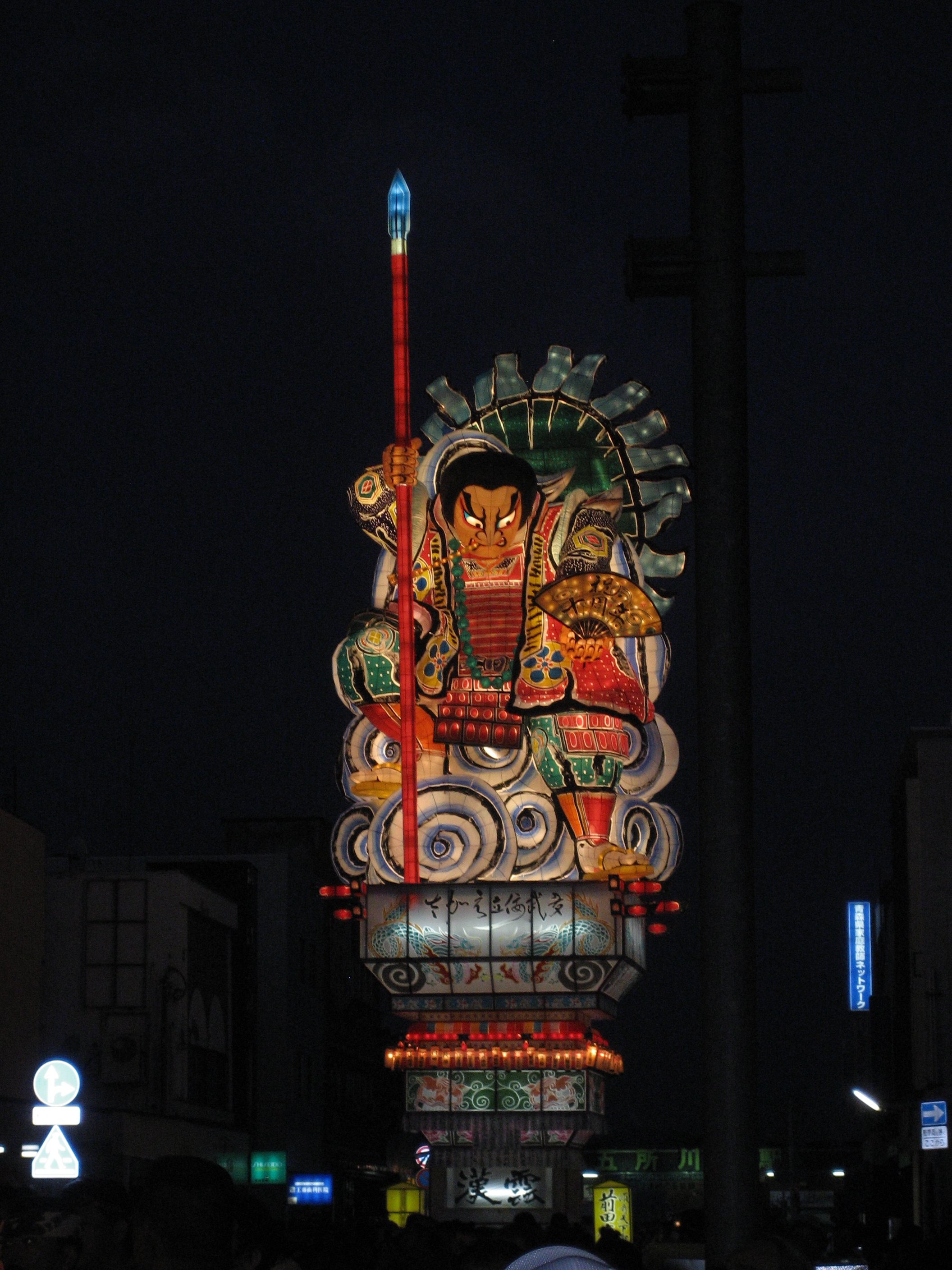
Within 24 hours of my arrival in Japan nearly one year ago, I was squished like a sardine into the vivacious crowd of Goshogawara Techi Nebuta. Some of the first few Japanese words I learned, like “sumimasen” which means ‘excuse me’ in English, came in very handy that night. Although I was moderately overwhelmed by the masses and their brown eyes glaring at my pale brunette hair and bright blue eyes, I couldn’t help but get sucked in. “Yatte Mara, Yatte Mara. . .” I found myself shouting with the crowd: words I didn’t even know if I was saying right, let alone knowing what they meant. The floats were three stories tall, which is especially impressive in a city full of single story buildings. In retrospect, I loved every minute of it, so much so that I couldn’t wait for the next festival, which fortunately came only a matter of days later. Since my introduction to the customs of Nebuta I’ve realized there is more to experience than can be done from the sidelines, I had to get in the mix. So, this year, I have joined a festival group, learned to play the Taiko drums, and I’m now very anxious for Techi Nebuta to begin!
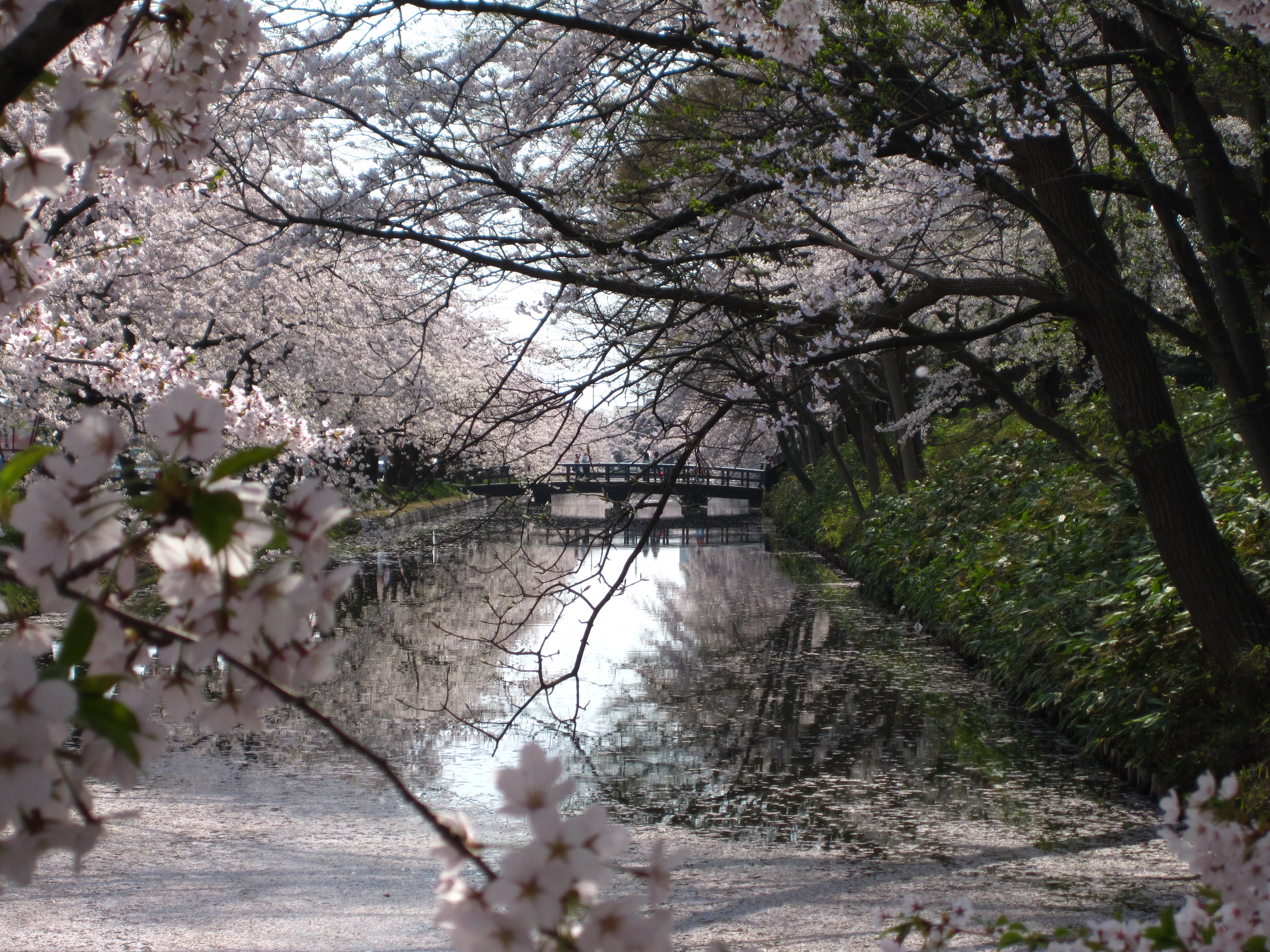
If you are ever blessed with the opportunity to experience Japan first hand, you should plan your visit around the local happenings if possible. Never attempt to come during Golden Week and avoid the less populated regions of Japan during Obon, but fighting the crowds during Hanami –Japanese Cherry Blossom season and the summer festival season is absolutely worth the mashed toes.
You’re sure to spot a few ladies in Kimono, people of all ages participating in traditional music and dance, find all sorts of delicious food pierced on sticks, become blissfully blinded by the bright lights, and possibly catch a glimpse of some fireworks! Most importantly, I guarantee you will feel like you have truly embraced and experienced the heart of Japanese culture.
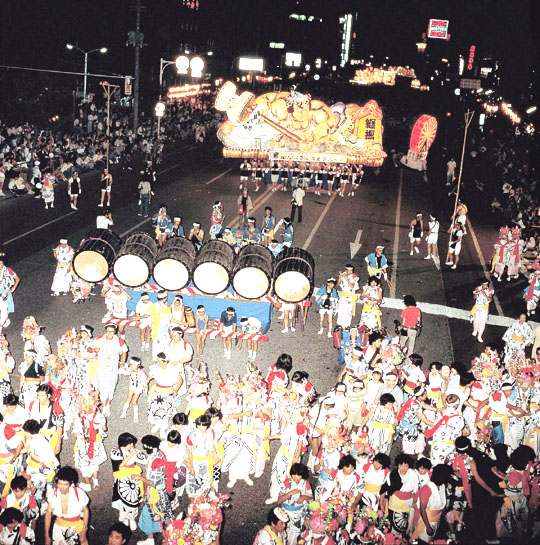
The first week of August is the busiest time for festivals. In the Northern Honsu region Aomori Nebuta, Goshogowara Techi Nebuta, Hirosaki Neputa, and the Akita Kanto Matsuri all occur simultaneously for a week straight. Aomori city, being the capitol of the prefecture has the busiest and most lively festival with an average of over twenty hand-made floats.
Goshogowara is known for the height of its floats while the Hirosaki festival is special because of the spinning floats. If you head south to Akita you can experience a truly unique festival, called Kanto Matsuri, where men carry over 200 poles that are up to 12 meters tall with up to 46 lanterns hanging from each pole, causing them to weigh about 50 kilograms, that majestically illuminate the night sky.
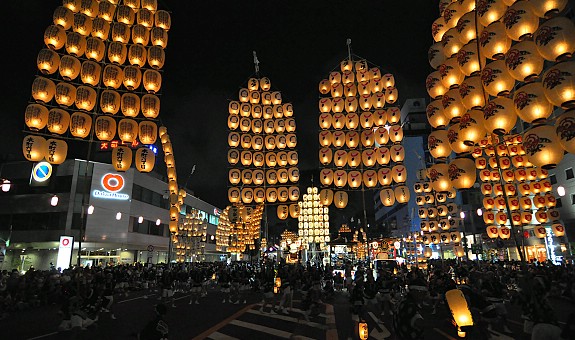
The floats for Nebuta and Neputa are constructed in a very similar, and highly diligent way. They begin by building a wooden frame roughly the shape of the float, then the actual shape is formed by thick wire welded together to form the shell. Over a thousand lights are then installed one by one. Next the rice paper is glued on in small sections. Then the painting begins with the first phase of outlining the image details in black, then filling in the individual colors and adding paraffin wax in areas to allow it to be translucent to the light. Finally the floats are placed on carriages and are ready for the parade. The entire process takes up to 8 months of hard work, then the floats are displayed for about a week, and they either deconstructed to be on display in pieces around the area or they are smashed and burned. It seems like an awful lot of work to use it for one week and then destroy it, but they certainly are impressive.
Summer is certainly not the only time for excellent festivals. In fact I would highly recommend Sapporo Yuki Matsuri for the brave at heart. The festival features snow and ice sculptures spread out in the downtown district of Sapporo. The sculptures are made for two weeks prior to the event and are broken into pieces, removed and dispersed after the festival is over. If the sculptures were left in the city to melt, it would cause a rather devastating flood. Viewing the sculptures amidst the negative temperatures and snowfall is surprisingly enjoyable, as long as you dress accordingly.
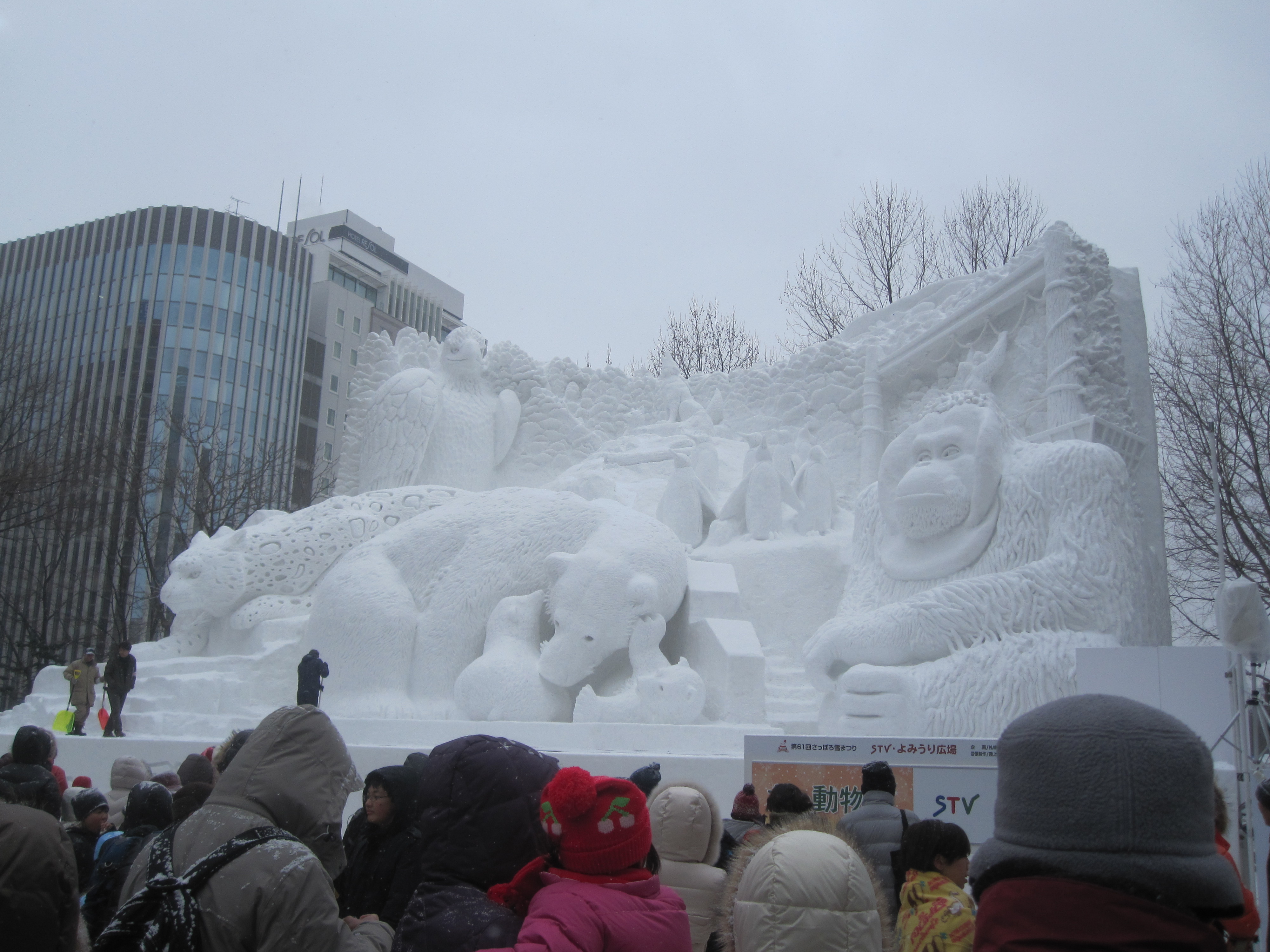
For a more comprehensive list of Festival descriptions and dates check out : http://www.japan-guide.com/e/e2063.html.

Great blog, Melissa! I love following your adventures and have come to appreciate Japan through them. It is so cool how often the Japanese celebrate life with all of their festivals. Good luck on the upcoming drums!
[…] *If you want to read another blog I wrote for a friend about Japanese Festivals please click here. Magnificent Matsuri […]